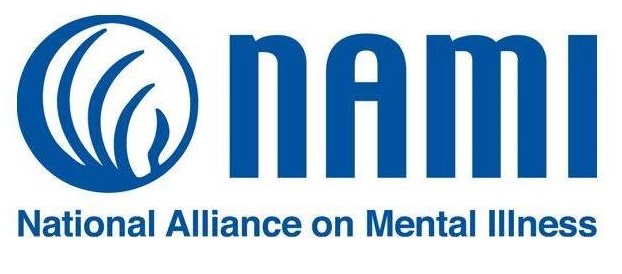
Webinar:
Looking Ahead:
Preparing Your IT Strategy
for an Uncertain Future

2020 has brought to the business world the importance of technology planning and strategy.
Tune in to our live webinar to learn how to make durable, sustainable technology plans to take you into 2021 and beyond!
Sign up today:
https://www.dpsolutions.com/webinar/it-planning-2021
Welcome New Clients!
We are thrilled to welcome the following organizations
to our family of clients:
 |
 |
 |
 |
 |
Making This One Mistake With Your Computer Network Could Put You Out Of Business
How do you handle network issues? If you’re like most small businesses, you wait until something breaks or goes wrong before getting an IT services company on the phone. At a glance, it makes sense. Why pay to fix something if it isn’t broken?
Sadly, this way of thinking can do more harm than good, and it has taken many businesses out of commission.
When you get right down to it, there are two primary ways to handle network security:
One of these costs significantly more than the other and can destroy a business. You can probably guess which one we’re talking about.
When you’re reactive with your IT services, which includes data security, it means something bad has already happened. There are many different things that can harm your data and your business, like an employee accidentally downloading malware onto their computer, you getting hit by a data breach or a power surge occurring late in the night after a thunderstorm hits.
However, being reactive basically opens the door to these threats. It’s the one mistake that can put you out of business for good.
Hackers, for example, are a HUGE threat to small businesses. These cybercriminals will stop at nothing to break into your network to steal whatever they can get their hands on or do whatever damage they can.
These people don’t care if their actions put you out of business.
This is why you cannot rely on a reactive approach to your IT services. When you do, you’re a step behind hackers, malware and even natural disasters and equipment failures.
In the past, IT services were very reactive. They were built on the break-fix model, which is exactly as it sounds. A business would wait for something to break or go wrong before calling an IT services company for help to fix it.
In the 1990s and even into the 2000s, the break-fix model had its place and it worked. But as technology improved and it became easier for even the smallest businesses to stay ahead of the curve, the break-fix model stopped making sense.
The number of external threats has increased dramatically over the last 10 years. There are countless malware programs floating around on the Internet, and hackers are working 24/7 to wreak havoc.
It’s time to get proactive.
Today, IT services companies can predict threats. They can stop attacks in their tracks and protect your business and your data. This is called managed services — and it could save your business.
When you work with a managed services provider, you can state exactly how you want to be proactive. Do you want your network monitored for threats 24/7? Do you want them to have remote access to your networked devices so they can provide instant support to you and your team? They can do all of that!
A good IT services company can help you make sure all your data is backed up and secure. They can make sure external threats are spotted before they become a problem. They can make sure phishing e-mails don’t expose you to harm. The list goes on!
If you’re already working with an IT services company and they’re only providing outdated break-fix support, it’s time to say, “Enough!” Demand that they get proactive to manage your network. Don’t wait until something breaks to make that phone call. Because, as many businesses have learned, waiting to make that call can be devastating!

4 Ways Leaders
Can Identify And
Overcome Blind Spots
Andy Bailey
One of the biggest challenges leaders face in their personal and professional development is identifying blind spots, the unseen obstacles that hold them back from achieving their full potential.
Unfortunately, many leaders don’t take the time to find out if they have blind spots. Research by Zenger Folkman found that 30% of leaders had at least one major flaw that they did not know about.
Finding and fixing blind spots isn’t for the faint of heart. It takes a lot of effort, courage and discipline to identify them and course-correct. But going through the process will help you and your business to keep moving forward. Here are four tips to guide you.

Andy Bailey is the founder, CEO and lead business coach at Petra, an organization dedicated to helping business owners across the world achieve levels of success they never thought possible.
With personal experience founding an Inc. 500 multimillion-dollar company that he then sold and exited, Bailey founded Petra to pass on the
principles and practices he learned along the way.
As his clients can attest, he can cut through organizational BS faster than a hot knife through butter.

Technology success is one of the key drivers for achieving business goals in 2020. Picking the right Managed IT Services Provider, or MSP is now more critical than ever.
In this video, we will walk you through four factors you should be considering when selecting the right MSP for your organization..
Get the Video Here:

“What’s the Biggest Security Threat in the Final Months of 2020?“
As we come to the end of 2020, the biggest threat for most organizations continues to be social engineering and phishing attacks on staff. It is an unfortunate truth that your staff can be your greatest mitigation tools, or your worse security risk.
Why? For starters, many of these attacks are cheap and easy to implement by anyone with the right skills, which are not difficult to achieve. Another thing to keep in mind is that phishing can be an avenue to a variety of different attacks, such as malware, tricking a user to giving sensitive information, or simply learning about the person behind the keyboard for intelligence on a future attack.
Every employee must know about the threat of phishing and social engineering. You should be testing and training your users to identify these attacks as they happen, to aid them in avoiding them.